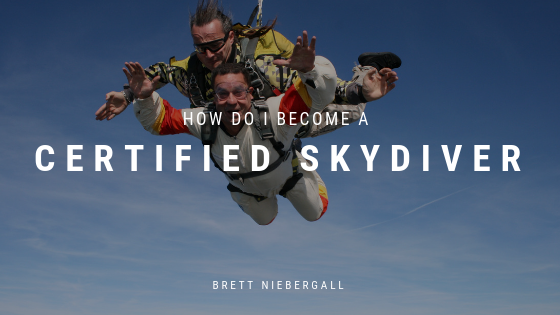How Do I Become A Certified Skydiver
Once some get a taste of their first free fall and glide like a bird, they might consider becoming a certified skydiver. However, undertaking the instruction, making the commitment and completing the requirements is definitely a challenge. But, after obtaining the certification, skydivers enjoy the benefits for years.
Commit
The first step involves admission to an Accelerated Freefall (AFF) Skydiving Program. Many facilities adhere to a program developed by the United States Parachute Association known as the safety-oriented, Integrated Student Program. ISP provides students with the basic and competency skills necessary to jump safely. The course involves eight series or categories of jumps in order to complete 25 jumps and 19 minutes of free fall. With the exception of two solo jumps, all of the other jumps occur from a height of 13,500 feet. Upon completion, students are eligible for graduation and a USPA “A” license.
The First Jump
Classroom time lasts up to eight hours. During this time, students receive the necessary ground training that includes a history of the sport and the types of equipment. Instruction also includes training concerning potential equipment malfunctions and emergency techniques.
The AFF Jump
Students commonly feel a sense of apprehension and nervousness. However, rest assured that you do not take the plunge alone. Two instructors exit the door of the plane with you. The instructors are on either side holding onto the safety handles embedded into your jumpsuit. The experience is designed to acclimate students to get a sense of free fall, the altitude and required body position.
Once the parachute opens, the instructors back away. At this point, guidance crews on the ground provide the instruction students need to land safely on the target area. A debriefing of the jump follows.
Series of Progressions
After the initial jump, students gradually progress through the series of jumps while demonstrating competence. During the process, students fine-tune their body positions and learn to control turns. They also learn how to glide various distances from other skydivers. Many enjoy performing the aerial acrobatics that includes backflips, barrel rolls, and front flips. Students also gain experience in controlling their canopy or parachute.
Additional Training
From the A license, a student may continue forward and acquire their B, C, and D level licenses. In this way, the love of the sport may lead some to become certified instructors. After obtaining all license levels, some might also join aerialist performance companies.

